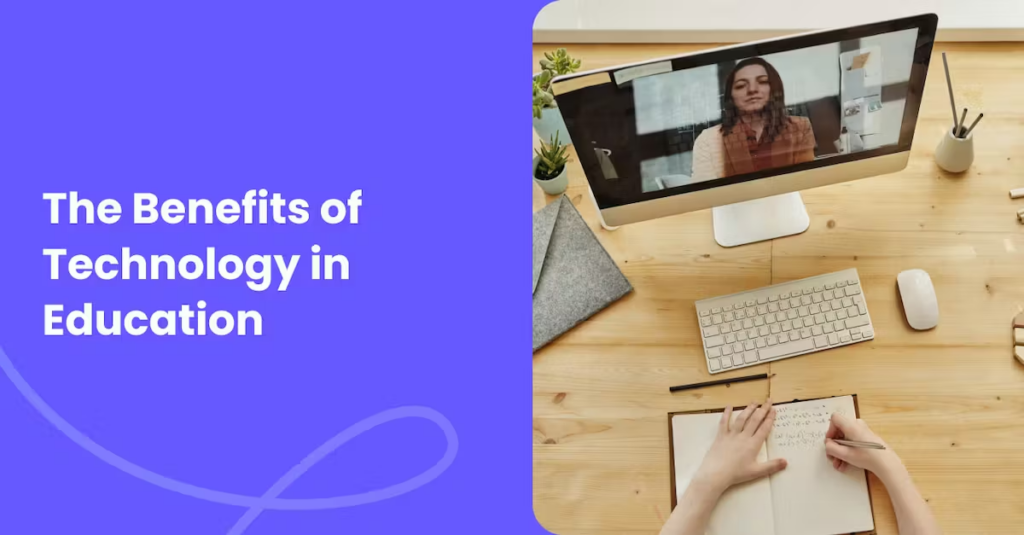
Information technology (IT) is now a necessary component of our everyday life in the digital age. One cannot overstate its influence on a number of industries, including schooling. The English language is vital to education since it is the universal language of the world. The way students study languages has been completely transformed by the combination of IT and language instruction. With a focus on promoting its wider use and outlining its advantages, this article attempts to investigate the role of IT English in education.
Benefits of IT English in Education

There are several options for students to study the language through IT English. Students can practice and advance their English language proficiency with the help of interactive activities, multimedia information, and real-time feedback provided by online platforms, language learning software, and mobile applications. Students’ access to and enjoyment of language learning is increased by these tools, which accommodate a variety of learning styles and proficiency levels.
Digital Literacy Skills:
Incorporating IT English in educational curricula equips students with essential digital literacy skills, enabling them to navigate technology tools, communicate effectively in digital environments, and understand IT concepts. For example, teaching students terms like “email attachment,” “browser tabs,” “search engine,” and “online safety” enhances their digital literacy and empowers them to use technology proficiently.
Technical Writing and Communication:
English language ability makes it easier to communicate technical requirements, ideas, and information clearly which are crucial for academic projects, reports, and interactions in learning environments. For instance, students learning IT English may practice writing clear instructions, technical documentation, or research papers on IT topics to enhance their technical communication skills.
Integration of Technology in Teaching:

IT English-speaking teachers are better able to incorporate technological resources and tools into their lessons, which improves student participation, teamwork, and learning objectives. Teachers who use phrases like “learning management system,” “interactive whiteboard,” “online assessment tools,” and “educational apps” in their instruction are efficiently utilizing technology.
Multimedia Presentations and Projects:
English fosters creativity, communication skills, and digital competency by enabling students to produce captivating multimedia presentations, digital projects, and interactive material.
Coding and Programming Education:

Since IT English makes it easier to understand the technical vocabulary, grammar, and algorithms necessary for software development, it is crucial for students learning coding and programming languages.
Moreover, IT English enables students and educators to collaborate and communicate globally. Students can interact with classmates around the world, share ideas, and work on projects together by using online resources and video conferencing software. This promotes global citizenship and cultural knowledge in addition to improving their language proficiency. Students learn about real language usage through IT English. Students can access a variety of real materials, including news articles, podcasts, and videos, through online resources. Their exposure to language use in everyday situations improves both their language skills and cultural sensitivity. Additionally, IT English gives students the chance to practice their English outside of the classroom in authentic settings.
Advocating for IT English in Education
Bridging the Digital Divide: promoting IT to close the digital divide in schooling, English is essential. All students, regardless of socioeconomic status, should have access to technology and IT English tools. To provide fair access to technology and encourage students’ digital literacy, governments, educational institutions, and stakeholders should work together.
Professional Development for Educators
Teachers require sufficient training and opportunity for professional development to successfully incorporate IT English into the classroom. Schools ought to spend money on training courses that provide instructors with the know-how to make the most of IT English resources. Teachers will be able to design dynamic and captivating learning spaces as a result, of supporting students’ language development.
Research and Evaluation
To assess how well IT English is used in the classroom, ongoing research and assessment are necessary. The effects of IT English on students’ language ability, motivation, and general learning outcomes should be the subject of further research. To successfully integrate IT English into the classroom, this evidence-based approach will guide educational policies and practices.
Global Communication:

IT English is the universal language of the tech industry, facilitating easy communication, idea sharing, and creative thinking among workers anywhere. By promoting IT English, we dismantle linguistic barriers and level the playing field for IT enthusiasts with various linguistic backgrounds.
Career Advancement:
Being proficient in IT English allows one to pursue a wide range of employment options in the quickly changing tech sector. Whether your interests lie in data science, cybersecurity, software development, or IT project management, learning IT English can help you succeed in today’s technologically advanced society. In Conclusion, incorporating IT English into the classroom has the potential to completely transform the way that students learn languages. It will give them access to a wider range of learning options, including individualized instruction, global cooperation, and real-world language use.
References
- https://elearningindustry.com/how-ai-driven-platforms-are-empowering-language-learning
- https://eslinfo.com/esl-classroom-manage…
- https://www.mindk.com/blog/digital-trans…
Ababakirova Marjona, student, Group 2101
International Journalism Faculty, UzSWLU
marjonamuk412@gmail.com


No Comments so far
Jump into a conversationNo Comments Yet!
You can be the one to start a conversation.